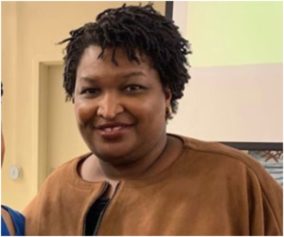With celebrations relegated to the shortest month of the year, Black history has been reduced to a highlight reel of America’s proudest moments. While photos of Dr. Martin Luther King Jr. linking arms to march courageously toward freedom are inspiring, the civil rights movement was more than nonviolent protests and sit-ins. The tendency to glamorize their struggles has led to a gross misunderstanding of the movement and is reflected in how we approach activism today.
Civil rights leaders were inspired by Mahatma Gandhi’s nonviolent civil disobedience, but prior to taking to the streets, they were avid students of his philosophies and ideas. In his memoir “Walking with the Wind,” Sen. John Lewis details the many hours spent role playing to train themselves not to react. It was this dedication that helped them remain stoic and unmoved as they faced threats and violence from the white public.
The economic significance of the civil rights movement is rarely discussed, but it is doubtful that protests would have been as successful in producing legislation had they not directly impacted local businesses and governments. At the time of the Montgomery bus boycott, an estimated 75 percent of its riders were African-American. Carpools were arranged, taxi drivers lowered their fares and Montgomery sidewalks became crowded during rush hour as many citizens chose to walk. Black churches and various organization across the nation raised money to support these efforts.
When King and other boycotters were indicted for conspiring to interfere with a business, they used their arrests to draw national attention to their cause and drove the local government into further economic distress with “Jail-No-Bail” sit-ins.
Perhaps it is our instant-gratification culture that makes it difficult to imitate the patience of leaders who remained committed to the Montgomery bus boycott for over a year. In 2011, the Occupy Wall Street movement received national attention when supporters protested corporate influence over democracy by occupying New York’s Zucotti Park. However, lacking a long-term vision, their protests failed to impact the corporations they were targeting and all that remains of their efforts today is the “We Are the 99%” meme.
More recently, film producer David Simon proposed a national “General Strike” for Friday, Feb. 17. It’s unclear who is spearheading the efforts now, although they’ve partnered with the Women’s March to draw attention to their cause. A hastily built website states, “Each strike should have a clear goal and should not be limited to missing work” but does not detail the strike’s own goals or proposed impact. It instructs supporters not to work or spend money, but in doing so isolates the most vulnerable populations that it claims to support.
Conversely, civil rights leaders made it a priority to support the low-income Blacks who were most impacted by institutionalized racism. The “Jail-No-Bail” campaign had a practical component, allowing people of all income levels to participate without having to scrape together bail money. For the March on Washington for Jobs and Freedom, organizers were instructed to reserve one in four seats for the unemployed and funds were specifically raised to help unemployed people join the march.
Another oft-ignored fact of the civil rights movement is that, although it was political, it was adamantly nonpartisan. At the time, conservatives, as well as Southern Democrats, supported state-sanctioned segregation and even Democratic supporters were slow in creating legislation to challenge it. An organizing manual for the March on Washington detailed plans to invite every congressman to the march regardless of ideology, and promised to release the names of those who attended. Distrust of government is currently at an all-time high and, and though activists are pushing citizens to contact their representatives with complaints, politicians are not expected to align themselves with current movements. Under a presidential administration that promises to bring back “law and order” and has already taken aggressive measures to legalize discrimination, the allegiance of lawmakers would mean a lot. Rather than be satisfied with ambiguous statements of support, activists need to put pressure on lawmakers to recognize the necessity of their movements.
Our tendency to romanticize the civil rights movement also makes it controversial to discuss changing ideas and strategies. It’s rarely mentioned how just before his assassination, King began to question the effectiveness of integration in achieving equal rights. It became clear to him that eliminating discriminatory laws would not dismantle the power structures that keep Blacks and other disenfranchised populations oppressed. Are today’s movements ready to discuss alternative ways to dismantle white oppression other than policy and legislation?
Movements like Black Lives Matter honor the strategic spirit of the civil rights movement but aren’t afraid to adapt tactics to fit our tech-driven culture. Launched by three Black women activists in 2012, BLM used similar nonviolent civil disobedience tactics when it brought protests to interstates and bridges, successfully drawing attention to its cause while disrupting the flow of society. The organization now has numerous chapters that work to educate and empower communities nationwide.
Initiated after the 2016 presidential election, the Women’s March helped organize the largest single-day demonstration in American history on the day after Trump’s inauguration. At first criticized for launching a new campaign instead of partnering with existing organizations, Women’s March leaders responded by spearheading collaborative efforts that are inclusive and intersectional. Likely inspired by civil rights’ voter-registration campaigns, Women’s March organizers recently announced “May Day-Your Voice, Your Vote,” an event to take place on May 13 that will register voters, educate the public on legislative processes and provide resources for getting involved.
As we move forward, we must continue to hold each other accountable and be willing to alter our strategies as necessary. We must make the additional effort to listen to voices that have been historically silenced and create inclusive solutions. Most importantly, we must channel the commitment of civil rights leaders who never lost sight of their goals even as they battled injustice in their daily lives.



